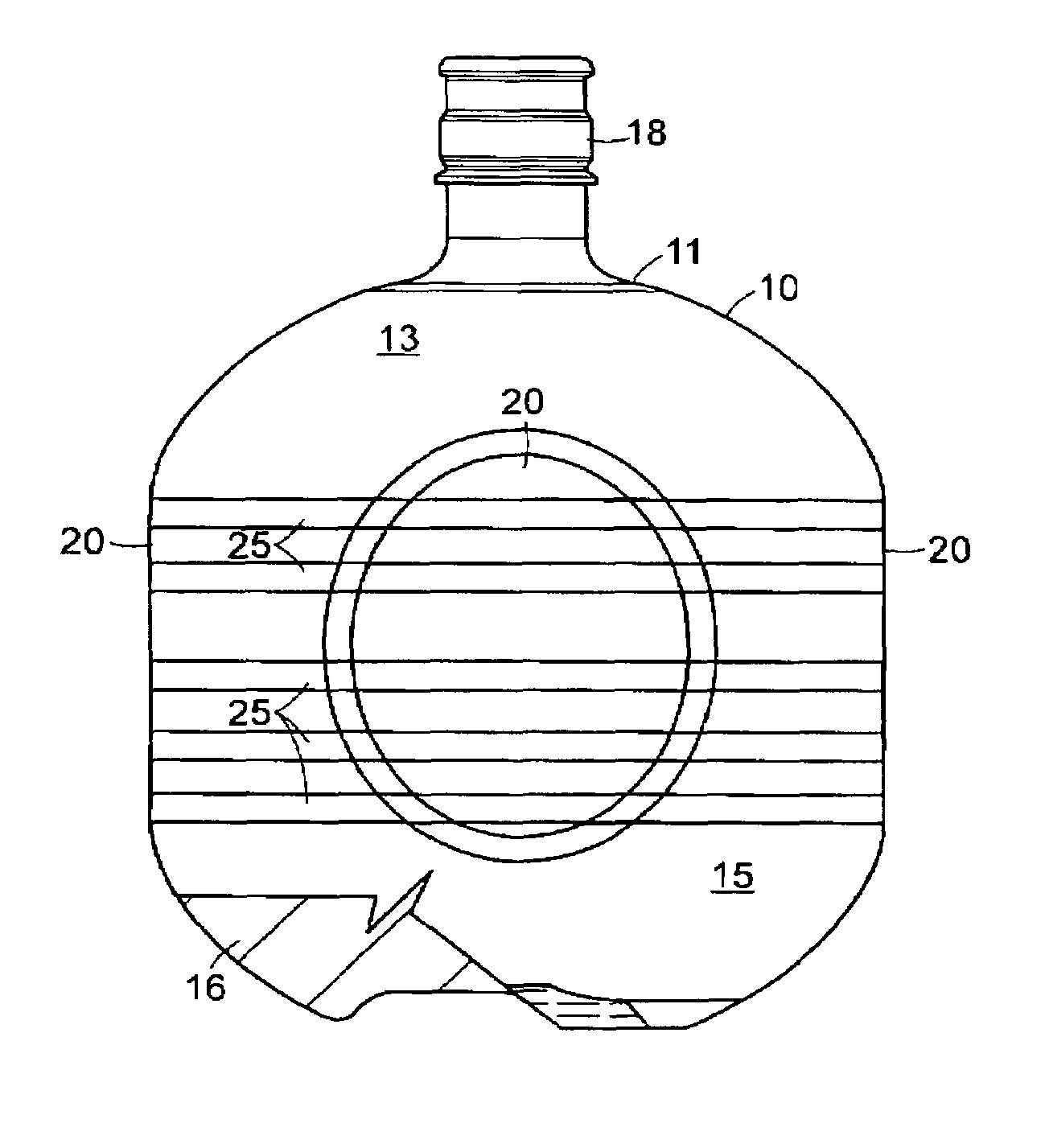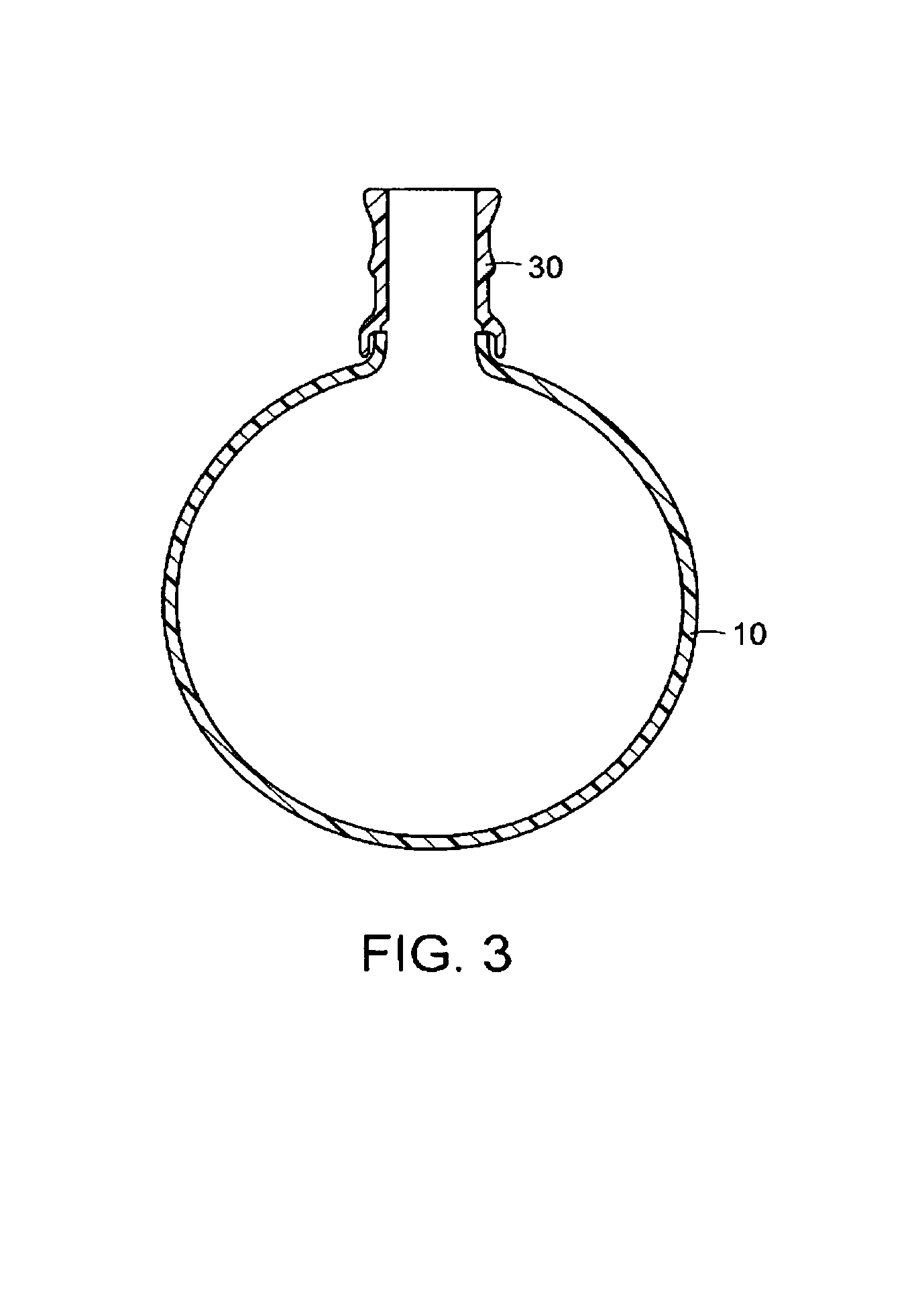Water bottle for a dispenser
a dispenser and water bottle technology, applied in the field of containers, can solve the problems of pet bottles, not being useful in a returnable mode, not being able to survive repeated washing of pet bottles, etc., and achieve the effects of reducing the spacing between bottles, reducing weight and ease of handling, and reducing the pressure poin
- Summary
- Abstract
- Description
- Claims
- Application Information
AI Technical Summary
Benefits of technology
Problems solved by technology
Method used
Image
Examples
third embodiment
[0045]In one embodiment of the invention the wall 13 has a spherical shape. See FIG. 1. In another embodiment of the invention the wall 13 has an oval shape. See FIG. 5. In another embodiment of the invention, the wall 13 has a plurality of flat areas 20 about its equator 14, said flat areas being equispaced about said equator 14. See FIG. 10. In another embodiment of the invention, the water bottle's capacity is increased by adding a short cylindrical section to the middle of the container, i.e., expanding the equator. This will allow more volume to be contained in a bottle with a smaller diameter. The above embodiment may be combined with the flat area embodiment for a third embodiment, wherein a waisted bottle with a plurality of flat equator areas may be provided. See FIG. 12.
[0046]The uniqueness of these embodiments is the combination of a spherical shape which has certain mechanical characteristics and the flat areas that provide desirable bottle spacing characteristics plus s...
first embodiment
[0063]In another embodiment of the invention a bottle is provided with four flat sides. Although this embodiment does not palletize as well as the hexsphere or the twelve-sided bottle, this version satisfies the filling conveyor width and bottle separation requirements. This embodiment has more spherical surface that the hexsphere and the diameter of the sphere before lopping off the panel areas can be smaller because fewer areas are made flat. The horizontal ribs that are added to the first embodiment are required strengthening elements for this embodiment as well. A disadvantage of the four sided embodiment is that the bottles must be arranged in a cubical arrangement on pallets instead of in a hexagonal arrangement which is more efficient in terms of packing density.
[0064]The bottle's capacity may be increased by adding a short cylindrical section 26 the middle of the container, i.e., expanding the equator by increasing its waist. This will allow more volume to be contained in a ...
PUM
 Login to View More
Login to View More Abstract
Description
Claims
Application Information
 Login to View More
Login to View More - R&D
- Intellectual Property
- Life Sciences
- Materials
- Tech Scout
- Unparalleled Data Quality
- Higher Quality Content
- 60% Fewer Hallucinations
Browse by: Latest US Patents, China's latest patents, Technical Efficacy Thesaurus, Application Domain, Technology Topic, Popular Technical Reports.
© 2025 PatSnap. All rights reserved.Legal|Privacy policy|Modern Slavery Act Transparency Statement|Sitemap|About US| Contact US: help@patsnap.com



